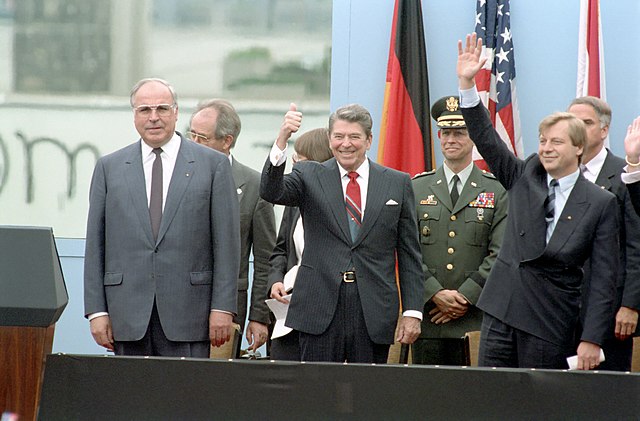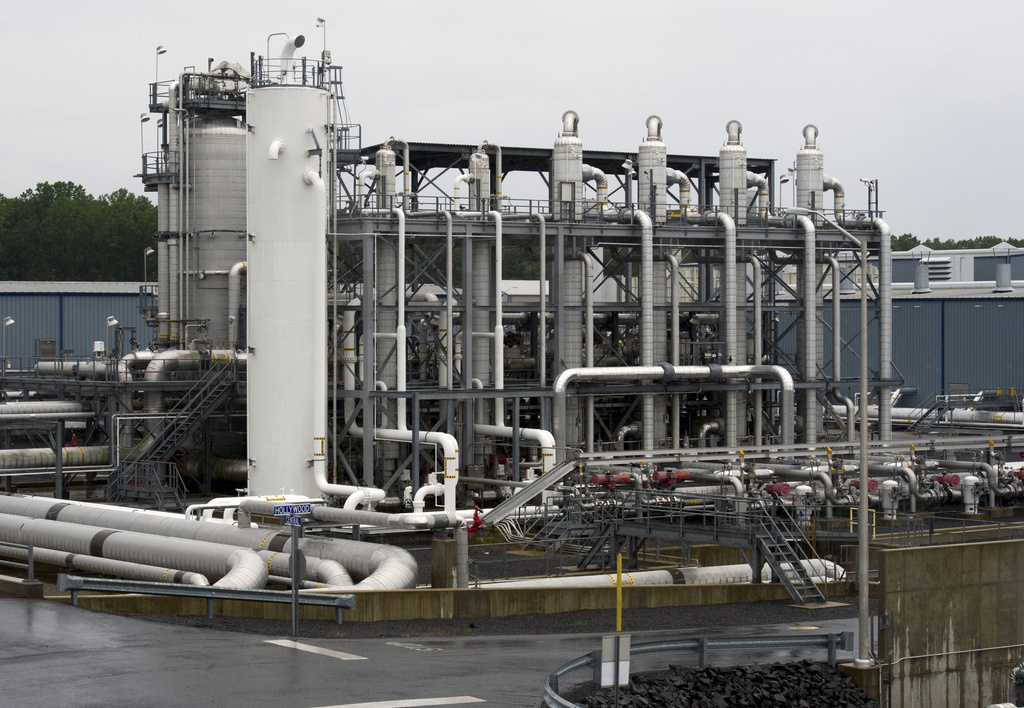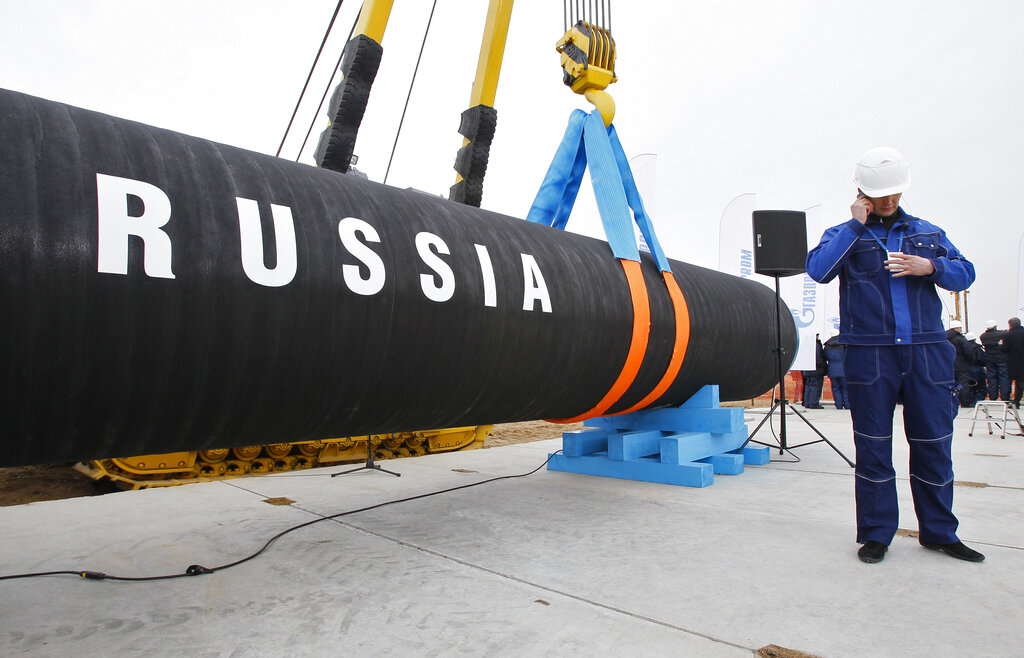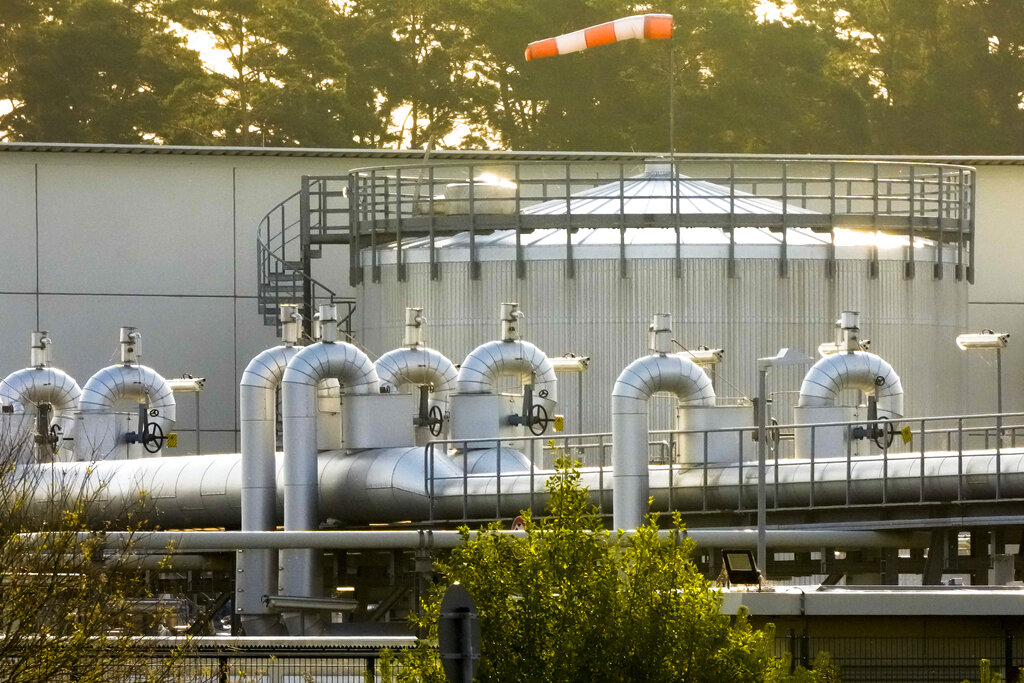Reagan Was Right After All: Europe, Following 40 Years of Deceptions, Cuts Its Last Gas Pipeline From Russia
America’s booming gas export business stands to gain.

Ronald Reagan’s wish came true this week. The last gas pipeline to Europe from Russia shut down. The 40th president’s political heir, Donald Trump, stands to reap the benefit.
That’s because America is now the world’s largest exporter of liquefied natural gas. Last year, 55 percent of American exports of this superchilled gas went to Europe. With the Russian pipeline shut off looming, the percentage of America’s LNG exports going to Europe jumped to 69 percent last month.
President-elect Trump has promised pro-gas “day one” executive orders, opening up more federal land for energy exploration and production and repealing the Biden Administration “pause” on new gas export facilities. It will take years for these policies to take effect, but the incentives are there. Natural gas prices in Europe are as much as five times as high as prices in America.
Just as Norway has supplanted Russia as Europe’s top source of pipeline gas, America plans to continue gaining gas market share that since the 1980s was Russia’s. Day by day, the geography of the international natural gas trade shifts, after 40 years during which security concerns drove the White House hostility toward gas from Russia.

President Reagan clearly and repeatedly warned Europe that construction of a 3,500-mile pipe connecting Siberia and West Germany would leave Europe dependent on Moscow. However, commercial interests prevailed. By 2022, the year Russia launched its full-bore attack on Ukraine, 13 pipelines fed gas to Europe from Russia. As a result, the European Union depended on Russia for 45 percent of its gas imports. This year, it could be 8 percent.
Marking the end of an era, on Wednesday the last molecules of Russian gas crossed Ukraine. This pipeline was the last of a east-west pipeline network that connected West Siberian gas fields with Europe. From first gas deliveries through a small pipeline to Austria in 1968, gas sales to Europe became a keystone of the Brezhnev era.
“We stopped the transit of Russian gas. This is a historic event,” Ukraine’s energy minister, German Galushchenko, said Wednesday. “Russia is losing its markets. It will suffer financial losses.”
Russia will lose about $6.5 billion a year in gas sales to Europe through the pipeline across Ukraine. This year, Russia will continue to supply Europe with liquefied natural gas by ship and with pipeline gas through the TurkStream line across the Black Sea and through Turkey. Built five years ago as an end-run around Ukraine, this pipeline will supply about 5 percent of Europe’s gas imports, largely to Hungary and Slovakia.

Ukraine will lose $1 billion in transit fees earned from Russia’s state gas export monopolist, Gazprom. About 80 percent of this money went to maintaining and operating its $20 billion network of export pipelines.
As long as the gas flowed during Russia’s nearly three-year war against Ukraine, the Kremlin refrained from blowing up the pipeline system and its vast storage reservoirs in Western Ukraine. With Trump’s inauguration fast approaching, many analysts believe that President Putin will refrain from attacking pipeline infrastructure. The American president-elect has repeatedly vowed to forge a quick end to the war.
Geography suggests that Europe and Russia should be energy partners. Under Mr. Putin, though, Russia proved to be an unreliable supplier, turning gas flows on and off to win political or commercial advantage.
“When Putin was given power in Russia more than 25 years ago, the annual gas pumping through the territory of Ukraine to Europe amounted to 130+ billion cubic meters,” President Zelensky posted Wednesday on Telegram. “Today, the transit of Russian gas is 0. This is one of Moscow’s biggest defeats.”
“The transformation of energy resources into weapons and the cynical energy blackmail of partners is what deprived Russia of the most attractive and geographically most accessible market for it,” he added.

After Mr. Putin attacked Ukraine, the European Union drew up a five-year plan to completely wean itself from Russian hydrocarbons — oil, pipeline gas, and liquefied natural gas. In 2018, Russia supplied 201 billion cubic meters of gas via pipeline to Europe. In 2023, it was 15 billion cubic meters. Last year, due to plummeting sales to Europe, Gazprom recorded a $6.9 billion loss, its first in more than 20 years.
In desperation, Mr. Putin is turning to Communist China. He seeks to win approval of his 1,700-mile, $14 billion Power of Siberia 2 pipeline to the People’s Republic. Beijing, sensing that it now has pricing power over Russia, declines to commit. The project languishes over prices.
For months, Ukraine signalled that it would not renew its 5-year transit agreement with Gazprom, but the contract’s expiration drew fury from Moscow.
“Responsibility for the cessation of Russian gas supplies lies entirely with the United States, the puppet Kyiv regime, as well as the authorities of European states that sacrificed the wellbeing of their citizens for the sake of providing financial support for the American economy,” Russia’s foreign ministry spokeswoman, Maria Zakharova, said Thursday in a statement.

Although coming in the middle of the winter heating season, the Ukraine shutoff failed to roil European gas markets on Thursday. Over the last five years, European companies have built pipeline inter-connectors and reverse flow capabilities to create an integrated continental gas market similar to North America’s. After Russia’s invasion of Ukraine, Germany reversed policies and embarked on a crash program to build 12 LNG coastal landing terminals.
“European gas infrastructure is flexible enough to provide gas of non-Russian origin to central and eastern Europe via alternative routes,” the European Commission said Tuesday. “It has been reinforced with significant new LNG import capacities since 2022.”
Thanks to these new connections, Ukraine’s largest private energy company, DTEK, one week ago took its first delivery of LNG from the United States. That load docked in Greece.
Two weeks ago, as it became increasingly clear that Ukraine and Russia would not renew the pipeline contract, the Austrian energy company OMV announced that it had terminated contracts with Gazprom and was “well-positioned” with alternative suppliers. After the cutoff started, Austria’s energy minister, Leonore Gewessler, said on X: ““We did our homework and were well prepared for this scenario.” Hungary says it will import Russian gas through Turkey.
Europe’s two big losers are Slovakia and Transnistria, the breakaway region of Moldova. As the western terminus of the gas line from Ukraine, Slovakia loses transit fees and cheap gas. In a video message posted Thursday on Facebook, Prime Minister Robert Fico of Slovakia denounced Ukrainian “sabotage.” He threatened to cut electricity supplies to Ukraine, to lower aid to Ukrainian refugees, and to demand compensation for losses.
Worst off is Transnistria, a Russian-speaking statelet between Moldova and Ukraine. On Wednesday, heat and hot water was cut off to the region’s 300,000 residents. Officials recommended that residents keep warm in the middle of winter by gathering in a single room, covering windows with blankets and using electric heaters.
Regional power company Tirasteploenergo said it switched to coal from gas, guaranteeing electricity supplies for another two months. Gas for cooking will continue only until pressure falls below “a critical level,” the company said on Telegram.
On Thursday, the local government ordered all industries to close, with exception of food producers. A land-locked territory, Transnistria has already lost about half of its population after winning de facto independence in 1992. Autonomy is maintained in this Rhode Island-size region by Russian military bases with a total of 1,500 soldiers.
Reflecting the Kremlin’s obsession with Ukraine, Transnistria, long a pet project of Mr. Putin’s “Russian World,” now seems to be getting the Syria treatment, in this case left to freeze in the dark.

